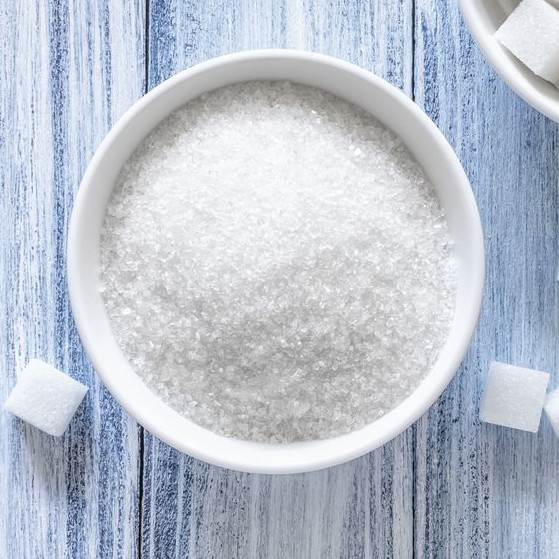The Journey of Cane Sugar Processing: From Harvest to Crystals
The Journey of Cane Sugar Processing: From Harvest to Crystals
Blog Article
An In-Depth Guide to the Ecological Effect and Sustainability Practices in Walking Cane Sugar Handling
The environmental impact of cane sugar processing offers a complicated selection of challenges that warrant mindful exam. From soil destruction and too much water usage to the carbon impact related to cultivation and production, the consequences of standard techniques are far-reaching. In comparison, the fostering of ingenious sustainability procedures offers a path towards much more responsible manufacturing approaches. Comprehending the interaction in between these problems is essential for stakeholders in the sector. What specific techniques can be carried out to strike an equilibrium in between productivity and ecological stewardship? The solutions lie in a more detailed consider both the obstacles and potential remedies.
Review of Walking Cane Sugar Processing
Walking stick sugar processing involves a series of methodical steps that transform sugarcane into polished sugar. Initially, harvested sugarcane is transported to refining centers, where it undergoes cleaning up to eliminate soil and debris. Following this, the cane is crushed to extract juice, which is after that made clear by eliminating impurities via home heating and the addition of lime.
The cleared up juice undertakes evaporation, where water is eliminated to focus the sugar web content. This focused syrup is then taken shape through air conditioning, permitting sugar crystals to form. These crystals are divided from the remaining syrup using centrifugation, resulting in raw sugar. To attain refined sugar, the raw product goes through further filtration processes, which might include filtering system and cleaning to get rid of remaining impurities and shade.
The final item is then dried out and packaged for distribution. Throughout this whole process, maintaining efficiency and high quality control is important to make sure the sugar meets industry standards. Each action in walking stick sugar processing not only adds to the end product but likewise has implications for source use and waste generation, establishing the phase for conversations on sustainability and environmental influences associated with sugar manufacturing.
Ecological Obstacles of Manufacturing
The manufacturing of walking cane sugar provides a number of substantial environmental obstacles that warrant focus. One main worry is the extensive usage of agrochemicals, including fertilizers and pesticides, which can cause soil degradation, biodiversity loss, and contamination of local water sources. The runoff from sugarcane fields often carries these chemicals into close-by environments, interrupting marine life and influencing the health of neighborhoods reliant on these water bodies.
Another challenge is the high power consumption related to sugarcane handling. The boiling and refining phases need considerable heat, mainly produced by shedding nonrenewable fuel sources, adding to greenhouse gas exhausts. Additionally, the expansive land area needed for sugarcane growing can result in deforestation and environment devastation, more worsening climate adjustment and threatening wild animals.
Furthermore, the labor practices in some areas elevate ethical problems, as workers might face bad working conditions and poor earnings. This situation typically bolsters a cycle of destitution in neighborhood neighborhoods. Cane Sugar Processing. Resolving these environmental difficulties is crucial for creating much more lasting methods in cane sugar manufacturing, inevitably benefiting both the atmosphere and the communities associated with this industry
Water and Land Use Impact
Water sources and land utilization are crucial parts in the walking stick sugar sector that considerably affect the setting. The farming of sugarcane calls for considerable water input, with price quotes suggesting that it can consume as much as 2,000 liters of water per kilo of sugar produced. This intensive use water often results in deficiency of neighborhood water sources, influencing not only the sugarcane ranches but also bordering ecosystems and neighborhoods that count on the very same water sources for farming and residential usage.

In addition, land usage for sugarcane farming can lead to logging and the conversion of all-natural environments into monoculture haciendas. This method diminishes biodiversity, interrupts regional communities, and adds to soil degradation. The development of sugarcane fields commonly trespasses on important farming land, producing competition for sources in between food and biofuel manufacturing.
Lasting practices, such as enhancing irrigation methods and executing crop turning, are vital to mitigate these influences. By embracing more efficient water use and land administration approaches, the cane sugar industry can lower its ecological impact, making sure a balance between farming efficiency and ecological preservation.
Greenhouse Gas Emissions
Greenhouse gas exhausts stand for a substantial environmental worry within the walking stick sugar processing industry, especially as agricultural methods broaden to fulfill international need. The cultivation of sugarcane, a crop that flourishes in exotic climates, depends greatly on artificial fertilizers and chemicals, which add to laughing gas exhausts. Additionally, land-use modifications, including logging for new sugarcane plantations, launch co2 stored in plants and soil.
Throughout processing, energy intake is one more significant source of greenhouse gas exhausts - Cane Sugar Processing. Several sugar mills utilize nonrenewable fuel sources to power machinery and produce warm, leading to significant carbon footprints. In addition, the transportation of raw sugarcane and learn the facts here now completed items includes layers of discharges via gas combustion in automobiles
The collective impact of these exhausts exacerbates environment modification, presenting threats not just to the atmosphere but also to the long-lasting stability of the market. Stakeholders need to identify the urgent need for comprehensive approaches that deal with these discharges. This involves assessing present farming methods, processing methods, and transportation systems to determine areas for improvement and reduction. Attending to greenhouse gas exhausts is essential for fostering a much more sustainable cane sugar market in a transforming climate.

Lasting Practices and Innovations
Sustainable techniques and advancements are increasingly vital in the walking stick sugar processing sector as stakeholders look for to minimize ecological effects while keeping efficiency. One substantial improvement is the application of incorporated plant management, which enhances source use by integrating dirt administration, bug control, and crop rotation techniques. This approach enhances return while lessening chemical inputs and protecting dirt health.
Additionally, the adoption of renewable power sources, such as biomass from sugarcane deposits, has acquired grip - Cane Sugar Processing. By converting waste products into click here for info power, processing facilities can reduce their reliance on fossil gas, therefore lowering greenhouse gas exhausts
Water management techniques have also seen renovations via the recycling and reusing of water in handling plants, substantially minimizing freshwater intake. Technologies in modern technology, such as precision farming, enable farmers to check crop health and wellness and source use much more successfully, making certain sustainable cultivation practices.
In addition, accreditation programs like Fair Trade and Jungle Alliance motivate environmentally accountable farming techniques and advertise social equity within the supply chain. By accepting these sustainable techniques and advancements, view it now the cane sugar processing sector can enhance its durability and add positively to ecological stewardship.
Final Thought
The ecological influence of walking stick sugar processing offers substantial obstacles, consisting of dirt degradation, high water consumption, and greenhouse gas exhausts, along with ethical concerns associated with labor practices. Addressing these issues with sustainable techniques, such as incorporated plant monitoring, renewable energy adoption, and water recycling, is vital. By advertising socially equitable and eco responsible approaches in sugar manufacturing, the market can alleviate its negative impacts, guaranteeing a more lasting future for both ecological communities and neighborhoods associated with this sector.
Cane sugar processing involves a collection of organized actions that transform sugarcane into polished sugar. Each step in walking stick sugar processing not just adds to the final item yet additionally has effects for source use and waste generation, establishing the stage for conversations on sustainability and ecological influences linked with sugar production.
Greenhouse gas exhausts represent a substantial environmental concern within the cane sugar handling market, specifically as farming methods broaden to satisfy worldwide need.Sustainable techniques and innovations are increasingly important in the walking cane sugar handling sector as stakeholders seek to decrease environmental impacts while maintaining performance.The environmental influence of cane sugar handling presents significant difficulties, consisting of soil destruction, high water intake, and greenhouse gas exhausts, together with honest problems associated to labor practices.
Report this page